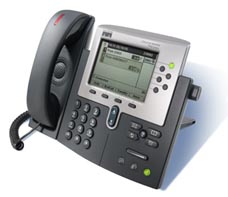SIP Trunking vs. Traditional (Analog) Phone Lines

“Analog” may be the traditional means of voice communication, but it is not the most practical use of technology in this day and age.
Traditional (or analog) style phone lines and systems consist of a series of copper wires running from a phone company to the service location. This is called the PTSN (Public Switched Telephone Network) which uses telephone poles, telephone wires and phone jacks to carry your voice.
By having a traditional analog phone system, you are physically limited to the amount of existing lines that run to your location. If you have 8 analog phone lines and all 8 are in use, then incoming phone calls from clients will be answered with a busy signal. Nobody wants to continually call your business like they’re trying to win a prize package from the local radio station.
Did you know that most businesses relying on a traditional analog phone system pay for up to 50% more lines than they need – just to be safe?
The Pros of Traditional Phone Lines
|
The Cons of Traditional Phone Lines
|
The SIP Trunking Advantage
What is SIP Trunking?
SIP stands for Session Initiation Protocol and is a telephony product that uses the internet to create a replicated (or virtual) phone line.
Call-One® centralizes your telephone network to one location with a virtual phone system that runs over your IP, creating substantial savings for businesses on their phone bills.
Bursting

With SIP Trunking there are no physical phone lines coming in to the building, giving you the ability add and remove voice channels with ease; without the installation of traditional phone lines.
This makes your phone system fully scalable and can be adjusted based on the number of locations you have (or even by your call history and usage). For example, you have 8 lines and they are all in use, every missed phone call is a missed opportunity.
SIP Trunking simplifies this situation by giving you flexibility. If your call volume is higher than your set voice channels, your service can “burst” for the next 24 hours to include up to twice the amount of your committed channels.
The Pros of SIP Trunking
|
The Cons of SIP Trunking
|
*Some services may incur a small fee.
